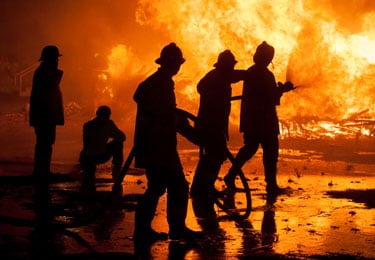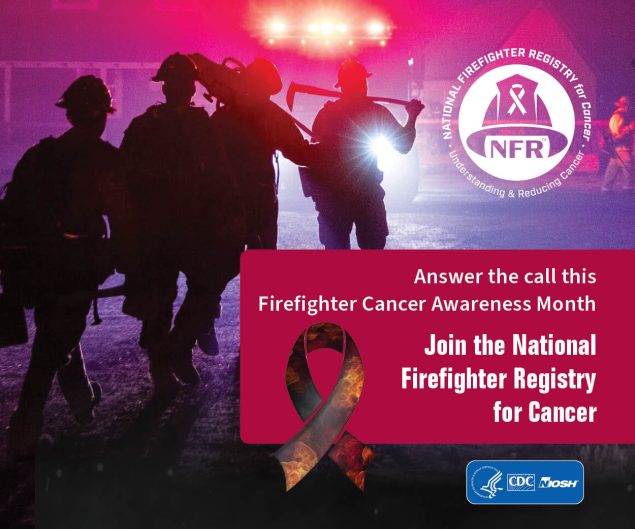Firefighter Cancer Awareness

Cancer is a leading cause of death among firefighters, and research suggests firefighters are at higher risk of certain types of cancers when compared to the general population. January is Firefighter Cancer Awareness Month. Learn more about firefighters’ cancer risk and what can be done to reduce the risk.
Hazards
Firefighting settings are complex and contain various hazardous substances. Firefighters can be exposed to hundreds of different chemicals in the form of gases, vapors, and particulates. Some of these chemical substances are known or suspected to cause cancer. Some of these hazardous substances are byproducts of combustion or burning, such as benzene and formaldehyde. Others come from the materials burning or in the fire debris, such as asbestos from older structures.
Firefighters can come into contact with chemicals by breathing them in, getting them on their skin or in their eyes, or by ingesting them. If protective clothing, known as turnout gear, is not adequately cleaned or stored after a fire response or training event, chemicals on the gear or equipment can contaminate vehicles and the fire station. Reusing dirty turnout gear or respiratory protection can also result in exposures to hazardous substances. These exposures can occur by skin contact with contaminated personal protective equipment (PPE) or by breathing in or ingesting particles from contaminated PPE.
Prevention
It is important for the Fire Service to educate its members about safe work practices. Effective training promotes a safety culture that cultivates sound work practices. Sound work practices are designed to reduce exposures to hazardous agents, which is key to reducing occupational illnesses, including cancer. Training should emphasize the proper use and care of PPE and turnout gear and the proper use of approved respiratory protection during all phases of firefighting.
Additionally, training that increases cancer awareness and physical well-being may encourage firefighters to adopt work practices that lower their exposures to cancer-causing substances. It can also help promote healthier lifestyles that may also reduce their cancer risk and increase the use of cancer screening tools.
An important part of preventing cancer in the Fire Service is learning more about it. That’s the goal of the National Firefighter Registry (NFR) for Cancer, which is a voluntary registry of active and former firefighters with the goal of understanding and reducing cancer in the U.S. Fire Service.
Join the National Firefighter Registry for Cancer

Share the National Firefighter Registry for Cancer with firefighters this month using new web banners, social posts, an email template, and QR Code. Find these resources in the Firefighter Cancer Awareness Month Toolkit.
The NFR is open to all U.S. firefighters, not just those with a previous diagnosis of cancer. Having many types of firefighters join the NFR is crucial to examining relationships between firefighter activities and cancer. All firefighters—paid or volunteer, active or retired, structural or wildland, no matter their length of service—can join the NFR. Firefighters can join the NFR by logging onto a secure website to complete a survey. The more firefighters who join the NFR, the more questions that can be answered about firefighting and cancer.
New! Firefighter Cancer Awareness Month Toolkit
Please share the Toolkit during Firefighter Cancer Awareness Month and encourage all U.S. firefighters, active or retired, no matter their length of service, to join the NFR for Cancer.


